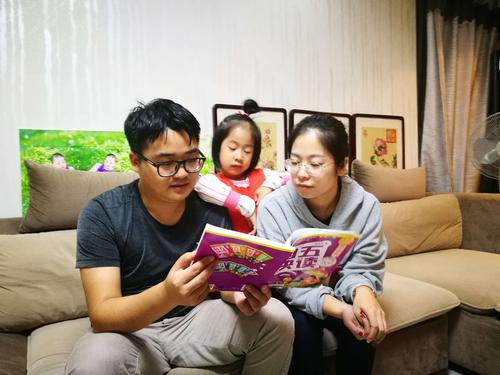latent是什麼意思ent在線翻譯讀音例句-西安工业大学教务网
2023年4月4日发(作者:not your kind of peop春望杜甫赏析 le)
英语元音辅音发音规则表
辅字组的读音
辅字组读音例词
b[b]bagbikebusblue
c[k]cakecard
[s]facedecidecinema
d[d]deskdadday
f[f]finefivefaceoff
g[d]orangeage
[g]goodbaggo
[]thank
h[h]hellohathothand
j[]jacketjobJune
k[k]keylikebike
l[l]hellolikelake
applefullbottle
m[m]morningnameme
n[n]nonicein
p[p]mappenapple
r[r]Frankred
s[s]spellthankssix
[z]pleaseisnose
t[t]itwhatwhiteten
v[v]even杨玉环和李隆基的野史 ingvestvery
w[w]whatwewell
x[ks]boxsix
y[j]youyellowyes
z[z]zoozero
sh[]Englishsheship
ch[]Chinachesschair
th[]thankthree
[]thisthatthey
ck[k]blackchick
ph[f]phonephoto
wh[w]whatwhite
[h]whowhose
tr[tr]tree
dr[dr]dress
ts[ts]what’sit’scats
ds[dz]bedshandscards
qu[kw]quitequiet
元音字母在重读开音节中的读音
元音字母读音例词
a[ei]namegame
e[i:]hesheme
i[ai]finelike
o[ou]gohome
u[ju:][u:]useblue
元音字母在重读闭音节中的读音
元音字母读音例词
a[?]Alicemapblackthank
e[e]bedletpendeskyesegg
i[i]isinitthissitsixmilk
o[]notboxdoghotclock
u[]mumbuscuplunch
元音字母组合在重读闭音节中的读音
元音字母
组合
读音例词
aiay
eiey
[ei]saydayagainplay
eighttheygrey
al[o:]allballtalkwall
ea[i:]teateacherplease
ee[i:]greenbeethree
oa[ou]boatcoatgoat
oo[u:]noontoomoonfood
[u]goodlookbookcook
ou
ow
[au]mouthhouseabout
hownowbrowndown
oioy[oi]boytoynoise
-r音节的读音
字母读音例词
ar[:]arecarfarfarmer
or[:]orforsportshort
er
ir
ur
or(w前)
[:]
hercertainly
girlbirdfirstshirt
turnnurse
wordworse
自然发音二十八条拼读规则
1.字母q总是与u在一起,读做/kw/,此处u不作元音.
2.字母c在字母e,y,i前读做/s/(cent,city,cycle),其他字母前读做
/k/(cut,cap,cop).
3.字母e,i,y之前的字母g可以读做/j/(page,giant,gym),其中字母e,
i之前的g也可以不读励志经典正能量语录 做/j/(get,girl,give);其它字母之前的g读做/g/
(gate,go,gust).
4.元音a,e,o,u在音节结尾(开音节)一般读做字母音(长音a,e,o,
u),有助于学生正确划分并拼读元音字母+辅音字母+元音字母的不熟悉单词(r
eport…ratherthanreport).
5.字母i和y经常读做/i/(big,gym),但是也可读做I(silent,my,type).
6.一个英语单词用字母y而不是i的结尾(my,by).
7.有五种情况末尾的字母e不发音.(如me,she,和he的短单词末尾的字
母e读做e,较长的单词末尾的e不发音)
尾字母e不发音应该被认为是”havingajob”(承担一项工作)
7.1bakegenetime/typecodecute使他前面的元音字母发字母音..
7.2lovegivebluetrue使我们不要以一个v和一个u结束一个单词.
7.3chancebodicechargeallege使g和c读软音/j/和/s/.
7.4littlecastlebottledabblefiddle避免一个音节没有一个元音
字母.
7.5arenurseraisebyeeweowecause这一条被Spalding女士叫做无工
作尾字母e;Sanseri女士叫做老工作尾字母e,并说前四条之外的不发音尾字
母e都叫做老工作尾字母e.
7.5.1使一个不是复数形式的单词不要以s结尾(dense而不是dens,purse不
是purs,false不是fals).
7.5.2加长短的主意词(main-idea),如awe,ewe,rye
7.5.3区分同音异形词的含义.如or/orefor/fore.
7.5.4中英语和外来语中(那里的尾字母e是要发音的)留下来的,现在不发
音.如treatisegiraffe
8.有五种字母组合发/er/的音/,记住下面的句子.
Hernursefirstworksearly.这个句子是按英语用法中的降序排列的.
另外,or在w后业可以发/er/的音.还要记住有些词尾的ar和or也发/er/的
音.如dollar,doctor.
9.1-1-1规则:单音节单词中,结尾是单元音加单个辅音的,在添加以元
音开始的词尾变化时,需要将末尾的辅音字母再写一次再加词尾变化.(如hop--
-hopped).但是词尾是x除外,因为它由两个音/ks/.
10.2-1-1规则:双音节词中,结尾是单元音加单个辅音的,在添加以元
音开始的词尾变化时,需要将末尾的辅音字母再写一次再加词尾变化(begin-
--begin+ning).第二个音节不重读的不能双写末尾辅音字母(enter,pr
ofit,budget).
11.去e规则,以不发音的e结尾的单词在添加以元音开始的词尾变化是需要
去掉末尾不发音的e.(come----coming)
12.是ie还是ei?一般情况下,应该是ie,长歌行汉乐府全诗 但是1)c之后用ei;2)发字
母a的音时,用ei(neighbor,weigh,vein).还有下面的例外情形Neither
:either
weirdproteinheifer:
13.音素sh用在一个基本词的开头或是结尾(she,dish),还用在一个音节
的结尾(finish),但绝对不会在后一个音节的开头,除非是以ship结尾(wo
rship,friendship).
14.音素si,ti,ci最常用在一个基本词的第二及以后的开头,发音/sh
/.常常可以通过考察词根和根词来确定发/sh/时用什么样的音素.比如
infecttoinfectious/collecttocollection/potenttopotent
ial
musictomusician/spacetospacious/financetofinancial
soci(companion)tosocial/ancien(old)toancient
cruc(cross)tocrucial/speci(kind)tospecial
15.音素si在前一个音节以s结尾时(session)发/sh/,一个基本词经过词
尾变化后只有一个s(tense---tension),其中的音素si发/sh/.
discusstodiscussion/compresstocompression/admistoadmis
sion
16.音素si可以发/zh/,如vision,division,occasion,explosi
on.
17.只有一个元音的单音节词,常常双写词尾的l,s,f.比如will,off,m
iss.有时双音节词也用到这条规则,如recess
18.词尾为长音a时,常用ay在词尾而不是a.(bay,day,decay)
19.元音i和o后面有两个辅音时,常发长音.(find,old)
20.s从不在x后,音素x包含一个/s/音,/ks/.
21.去L规则1:all单独出现有两个l,但在前缀中只有一个l.(almost,
also,although).
22.去L规则2:till和full单独出现有两个l,作后缀只有一个l.(unt
il,plentiful).
23.音素dge只用在单元音后面,而且这个元音发短音(badge,edge,bridge,
lodge,budge).
24.Y变I规则:进行词尾变化时,词尾是一个辅音字母+y,要变y为
i.下列两种情况驻外(1)加-ing,(2)变后会引起音节分裂.
city/citiesbeauty/beautifulplay/playerfunny/funniest
multiply/multiplyingrely/reliablecry/crieddeny/denied
25.音素ck只用在单元音后,而且这个元音发短音(back,neck,lick,roc
k,duck).
26.字母开头的z永远发/z/,不会发/s/.
27.音素ed有三个音,基本词以/t/和/d/音结尾,ed发/ed/(divide---divi
ded,heat---heated);基本词以浊辅音结尾的,ed发/d/(lived),以清辅
音结尾的发/t/(stopped)
28.单词常常(always)在双辅音间分音节[但要注意不要把辅音字母组合分开
(如mathematic)],重读音节的辅音才发音,非重读音节的辅音不发音li
ttle.
翻译时,consonant译作辅音,vowel译作元音.
自然拼读法基本规则:
1.二十六个字母的读音(LetterSounds).
五个元音字母(a,e,i,o,u),每个发两种音:长音(其字母音)和短
音
y不在单词开头时,一般被看做元音
2.单元音单词拼读(Consonant-Vowel-ConsonantCombinations)
如果一个英语单词或音节里只有一个元音,且元音不在末尾,这个元
音一般发短音.
如:Sam,cat,mat,等等.
BeginningConsonants
EndingConsonants
OneVowelWord,ShortVowelSounds
3.双元音单词拼读(TwoVowelWords):
一个单词或音节里有两个元音时,一般来说,前边一个元音发长音
(其字母音),后边一个元音不发音.
如:make,mail,may,hay,say,see,sea,meet,meat,key,five,
nine,tie,road,coat,toe,cute等等.
4.双/三辅音在一起时的联读(ConsonantBlends)
芳草亦未歇 Beginningconsonantblends(bl,br,cl,cr,dr,fl,fr,gl,fr,pl,pr,sc,
sk,sl,sm,sn,sp,st,sw,tr,tw,scr,spl,str)
Endingconsonantblends(ft,lf,lm,lp,lt,mp,nd,nk,nt,pt,sk,st)
Wordsendinginll,ss,ff
Consonantdigraphs(ch,th,sh,wh)
5六位师兄个个很难缠在线阅读 .特殊读法(1)–带元音的特殊读法(IrregularVowels)
igh,ing,ind,ild,ar,or,oi,oy,alt,alk,ost,old,er,ir,ur,ew,sion,
tion,eigh,all,ow,ow,ou,ay,ous,ed,ed(t),ed(d),aw,au,oo,oo
以上字母组合作为整体音节发音。需记住它们所发的音。
Examples:
ar(car,far),air(hair),are(hare),au,augh(caught),aw(hawk)
al,all(all,tall,mall,hall),alk(talk,walk),alt(halt,salt),ay(may,
play)
ew(new,few),eigh(eight,weight),
ed:
says/ed/:patted,landed,lifted
says/t/:walked,hopped,stopped
says/d/:cried,played,chewed
er(sister,brother),ir(girl,fir,firm),ur(burn,hurt)
ie(field),ing(king,sing,dancing),ind(find,kind,behind),ild(mild,
wild,child),igh(high,night,light),ire
oi(oil,boil),oy(boy,toy),old(old,cold),ost(most,host),olt,
oo(book),oo(tool,school),or(or,for,horn),
ow(读音一:cow,now,how,bow;读音二:bow,low,blow,
snow),
ou(shout,out,loud)
ould(could,would),ough(五种不同的读音:cough,through,
ought,slough,plough),
ought,,ous(famous,nervous),
ue(cruel),ui(fluid)
tion(attention,fiction),sion(passion,expression),
endingsounds:ang,ong,ung,edge,le
6.特殊读法(2)
如果一个单词或音节里只有一个元音,而且元音在末尾,这个元
音一般发长音(其字母音)(Vowelattheend).
如:me,hi,go,baby,table,humor,hibernate等等。
Y在末尾(作为元音处理)(yattheend):
单音节词,没有其他元音,y发”I”(onesyllableword,yattheend
(pronouncedas“I”)):my,why,fly,sky
多音节词,y发”E”的音(twoormoresyllables,yattheend
(pronouncedas“E”)):daddy,mommy,baby,honey,crazy
7.特殊读法(3)-固定读音的单词(SightWord):
is,are,the,a,to,here,hey,have,son,love,come,give,
field……等.
它们不遵守前边的发音规则,需要死记硬背。
8.特殊读法(4)–辅音的特殊读法
有一些辅音不发音(silentconsonants).
Silentb:comb,lamb
Silenth:ghost
Silentk:knife,knock,knob,know…
Silentw:write,wrist,wreck…
\"c\"和\"k\"在一起时,发一个音:quick,black等.
\"q\"总是和\"u\"在一起:quite,quick,quit,quilt等.
之所以指出这一点,是在这里u不能再被认为是元音,而是和q一
起组成一个辅音组合.于是,在quite这个单词里只有两个元音,是双
元音单词,第一个元音i发字母音,第二个元音e不发音.
\"p\"和\"h\"在一起,发/f/的音:phone,photo.
复数s及末尾s的读音(Pluralsand古诗渔歌子 thesoundsofendings)
c和g的两种读音:
如果i(或y)或者e跟在c或者g的后边,c发/s/,g发/j/的音:
center,cigar,nice,mice,gem,giant,gym,page.
其他情况下,c发/k/,g发/g/:can,clap,cup,great,glad,got,
goat,log.
特殊情况:get,give
9.多音节单词和复合词(Wordswithmultiplesyllablesand
compoundwords)
多音节单词:believe,multiple,syllable,compound
复合词:homework,highway,sidewalk,inside,outside
更多推荐
gin是什么意思在线翻译读音例句








发布评论